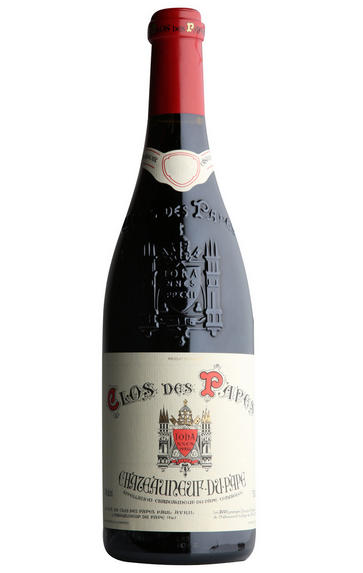
2007 Châteauneuf-du-Pape Rouge, Clos des Papes, Paul Avril & Fils, Rhône
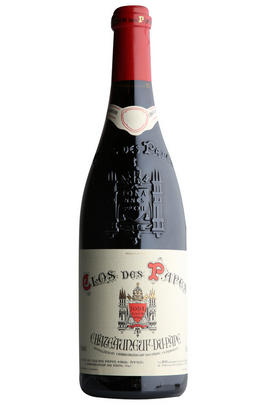
Critics reviews
The 2007 Chateauneuf du Pape is the greatest Clos des Papes I have ever tasted! The 2007 reveals all the characteristics that make Clos des Papes memorable, including extraordinary elegance, remarkable complexity in the black raspberry, kirsch, truffle, meaty, Provencal herbaceousness, full-bodied palate, voluptuous, silky tannins, and mind-boggling richness and length.
The vintage’s excellent growing conditions have given the wine a freshness to go along with its substantial size and power. This monumental Chateauneuf is a tour de force in winemaking. It should evolve along the lines of the 1978; only the 2007 has more to it, so expect it to last at least 30 years. Not to be missed!
Drink now
Robert Parker, Jr., Wine Advocate (October 2008)
Strong, ripe purple fruits plus a hint of gaminess on the nose. Great beautiful richness on the palate. Sumptuous and glorious but not hot. 25 hl/ha – excellent supple tannins. Great directions. Probably best decanted. But much more evolved than 2005, for example.
Drink now
Jancis Robinson MW, jancisrobinson.com (November 2014)
One of the great vintages from this estate, surpassing even the 1990, 2000, 2001, 2003, and maybe the 2010 (time will tell with this one), the 2007 Chateauneuf du Pape from Vincent Avril delivers everything you could want from a wine.
Full-bodied, intense and beautifully concentrated, with plenty of muscle and depth, it shows the hallmark elegance and purity of the estate, with sensational notes of kirsch liqueur, raspberries, incense, smoked meats and Asian spices.
The blend is the typical 65% Grenache, 20% Mourvedre, 10% Syrah and a mix of permitted varieties, brought up all in older foudre, and it's just now entering its prime drink window and has another two decades of longevity.
Drink now
Jeb Dunnuck, jebdunnuck.com (March 2017)
About this WINE
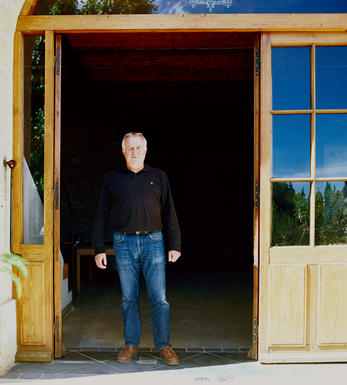
Paul Avril et Fils
With Vincent Avril at the helm, Clos des Papes is one of the most highly regarded properties; not only in Châteauneuf-du-Pape, but in the world of wine. This family estate has been certified organic for 15 years, with high attention to detail translating into impressively low production levels. Given that the vines here average over 50 years of age, they are firmly prepared and able to withstand many ordeals, including Mistral winds at 140 kilometres an hour, severe heatwaves and drought conditions. Thankfully, they were spared from the latter two in 2020.
When you visit this iconic estate, what stands out most is the complete focus on the vineyard and the absolutely hands-off approach in the cellar. The wines are amongst the purest expression of terroir you could ever wish to taste. There is a magic here that transcends the liquid in the bottle – Clos des Papes is a nonpareil of sheer brilliance.
Vincent is exceptionally happy with his ’20 wines, saying, “I can tell you ’20 is, I think, a great year that will stand the test of time. A very balanced, fine vintage with great freshness, silky tannins and good length in the mouth. Everything was climatically united, both for the red and the white. Currently, ’20 reminds me of ’05 and ’07.”
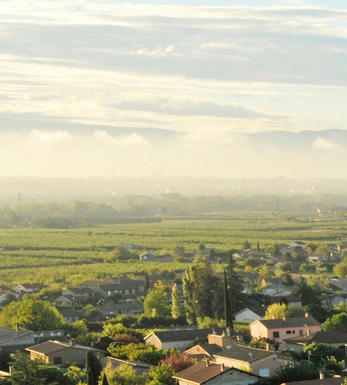
Châteauneuf-du-Pape
The most celebrated village of the Southern Rhône, Châteauneuf-du-Pape is the birthplace of the now indispensable French Appellation d’Origine Contrôlée system – imperfect though it may be. Compared to the Northern Rhône, the vineyards here are relatively flat and often feature the iconic galet pebbles – the precise benefits of which are a source of much debate. Minimum alcohol levels required by the AOC are the highest in France, but at 12.5% it is well below the natural generosity of Grenache, which only achieves its full aromatic potential when it is fully ripe and laden with the resultant high sugars. Syrah and Mourvèdre contribute the other defining elements in the blend, adding pepper, savoury spice and structure to the decadent Grenache. There are a further 10 permitted red grape varieties which can be used to adjust the “seasoning”. Of the five white varieties permitted, it is Grenache Noir’s sibling – predictably perhaps – Grenache Blanc, which dominates, though Roussanne shows a great deal of promise when handled well, notably at Château de Beaucastel.
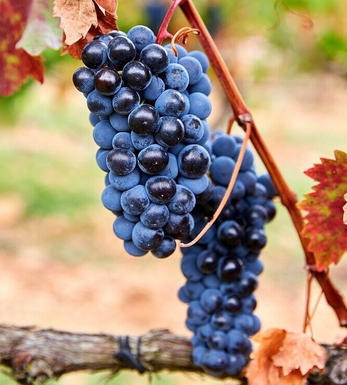
Southern Rhône Blend
The vast majority of wines from the Southern Rhône are blends. There are 5 main black varieties, although others are used and the most famous wine of the region, Châteauneuf du Pape, can be made from as many as 13 different varieties. Grenache is the most important grape in the southern Rhône - it contributes alcohol, warmth and gentle juicy fruit and is an ideal base wine in the blend. Plantings of Syrah in the southern Rhône have risen dramatically in the last decade and it is an increasingly important component in blends. It rarely attains the heights that it does in the North but adds colour, backbone, tannins and soft ripe fruit to the blend.
The much-maligned Carignan has been on the retreat recently but is still included in many blends - the best old vines can add colour, body and spicy fruits. Cinsault is also backtracking but, if yields are restricted, can produce moderately well-coloured wines adding pleasant-light fruit to red and rosé blends. Finally, Mourvèdre, a grape from Bandol on the Mediterranean coast, has recently become an increasingly significant component of Southern Rhône blends - it often struggles to ripen fully but can add acidity, ripe spicy berry fruits and hints of tobacco to blends.


Buying options
Add to wishlist
Description
The 2007 Chateauneuf du Pape is the greatest Clos des Papes I have ever tasted! The 2007 reveals all the characteristics that make Clos des Papes memorable, including extraordinary elegance, remarkable complexity in the black raspberry, kirsch, truffle, meaty, Provencal herbaceousness, full-bodied palate, voluptuous, silky tannins, and mind-boggling richness and length.
The vintage’s excellent growing conditions have given the wine a freshness to go along with its substantial size and power. This monumental Chateauneuf is a tour de force in winemaking. It should evolve along the lines of the 1978; only the 2007 has more to it, so expect it to last at least 30 years. Not to be missed!
Drink now
Robert Parker, Jr., Wine Advocate (October 2008)
wine at a glance
Delivery and quality guarantee